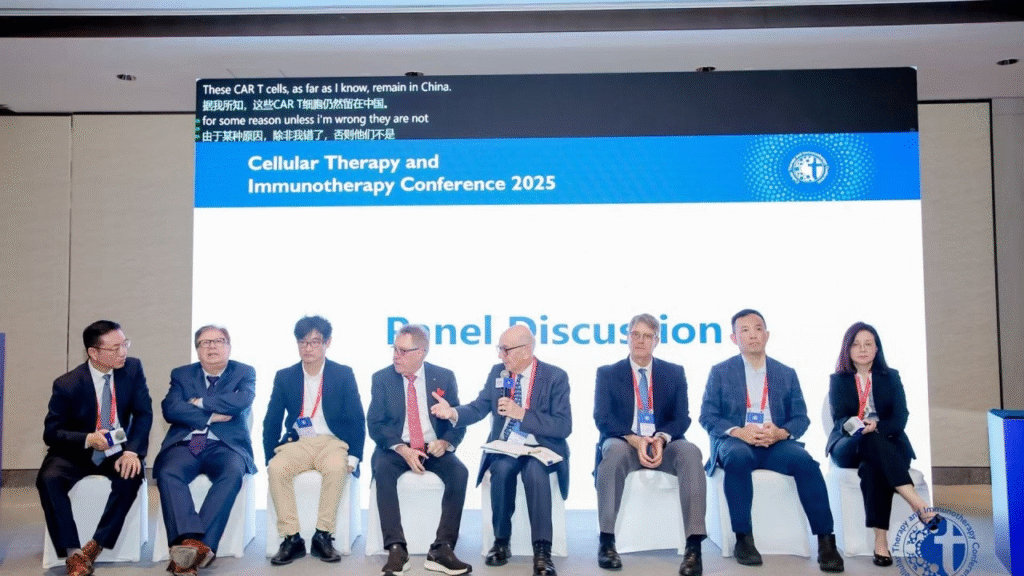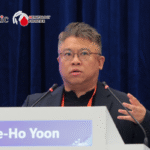
Editor's Note: The Cellular Therapy and Immunotherapy Conference 2025 was successfully held in Hangzhou, China, from November 13-16, 2025. The conference brought together a distinguished gathering of the world's leading researchers, clinicians, and industry pioneers to share groundbreaking advancements and foster collaboration in the rapidly advancing fields of cellular and immune-based treatments. The morning's agenda offered a comprehensive survey of the global landscape, featuring in-depth presentations on the evolution of CAR-T cell therapies in China, Europe, and Japan. The discussions also addressed critical challenges in navigating regulatory frameworks, ensuring patient access, and maintaining affordability for cell and gene therapies across diverse regions, including Asia, Latin America, and other resource-limited settings. Culminating these insightful sessions was a dynamic Panel Discussion. This concluding segment provided a vital forum for the session's international experts to synthesize the diverse perspectives shared, engage in a robust dialogue on overcoming current obstacles, and collaboratively envision the future trajectory of immunotherapy and cell therapy on a global scale. The discussion underscored a collective commitment to advancing these transformative treatments from the laboratory to patients in need worldwide. The panel discussion served as a synthesis of the preceding sessions, with the moderator inviting questions to foster dialogue. An opening question was directed at Professor Wong He regarding the prospects for internationally approved Chinese CAR-T cell therapies, given their significant cost advantage compared to Western counterparts, which can exceed 350,000 euros per treatment in Europe. The query highlighted the interest from institutions in regions like Europe and Latin America in accessing these more affordable options, which may cost approximately 70,000 euros or less in China, and inquired about the pathway to gaining regulatory approvals from agencies such as the FDA or EMA.
Professor Wong contextualized the rapid development of CAR-T therapy in China over the past decade, attributing it to supportive national policies and effective collaboration between clinical researchers and pharmaceutical companies. He outlined the future trajectory, emphasizing the development of next-generation technologies such as universal CAR-T products, therapies that circumvent the need for lymphodepleting chemotherapy, and streamlined point-of-care manufacturing processes aiming for production within hours or days. The ultimate goal, he noted, is to leverage these technological advances, including the potential for in vivo CAR-T approaches, to reduce costs and broaden patient access globally. However, he acknowledged that regulatory approval remains a primary barrier to entry into markets like Europe and the United States.
A panelist from Japan noted that Chinese pharmaceutical companies are initiating steps toward clinical trials in Japan, signaling a potential future pathway for entry. This perspective was complemented by a discussant from Malaysia, who emphasized the need to educate local regulatory bodies that often default to FDA standards. The suggestion was made to develop regional consensus and harmonized documentation processes to facilitate the approval of high-quality therapies already sanctioned in other jurisdictions, such as China. A representative from Mexico highlighted an advantage in regions without commercially available CAR-T products, as the absence of pre-existing approved therapies can reduce regulatory hurdles, creating an opportunity for early collaboration and education of national agencies.
A European panelist outlined two potential models for introducing Chinese CAR-T therapies internationally: licensing the patent to an international pharmaceutical company for development and regulatory submission—exemplified by the journey of Cilta-cel—or a paradigm shift where CAR-T is reclassified not as a final drug product but as a process involving a vector. This latter model would enable academic centers to produce therapies at the point of care using industrially manufactured vectors, potentially lowering costs and increasing accessibility. The unique regulatory model of Hong Kong, which now accepts mainland China’s drug approvals, was presented as a successful example of regulatory adaptation that could serve as a template for other regions.
The discussion then broadened to consider the global implementation of cell therapies. A representative from South Africa emphasized the potential for closer collaboration within the BRICS alliance, advocating for leveraging Chinese innovations to bypass costly Western platforms and directly address local needs through education of regulatory authorities and technology transfer. The conversation also addressed the production model for CAR-T therapies, debating centralized industrial production versus academic or point-of-care manufacturing. While concerns were raised about product variability between academic centers, it was countered that with harmonized quality controls, automated systems, and standardized kits, decentralized production could become feasible and reliable. The example of Cilta-cel’s transition from a Chinese innovation to a global, yet still expensive, product underscored the influence of perception and tiered pricing models. The panel noted a positive shift in perception of Chinese biopharmaceutical innovation from “me-too” to “me-better” and even “first-in-class” products.
In conclusion, the panel recognized the necessity of forming international working groups to address key challenges, including regulatory harmonization, quality control standardization, and professional training. Initiatives led by organizations like the EBMT were endorsed to create actionable plans for improving global equity in access to advanced cellular therapies. The session closed with a consensus on the need for continued collaborative efforts to translate scientific advances into tangible patient benefits worldwide.







